53 papers:
 CASE-2015-FerreiraBGV #framework #using
CASE-2015-FerreiraBGV #framework #using- Consolidation of the control system of a chemical polishing machine for superconducting RF cavities using the UNICOS-CPC framework (RF, SB, PG, HV), pp. 1471–1476.
 CASE-2015-ForsmanR #process
CASE-2015-ForsmanR #process- Chemical process control practice — Some examples and observations (KF, JR), pp. 892–893.
 CASE-2015-Kruif #maintenance #optimisation #sequence
CASE-2015-Kruif #maintenance #optimisation #sequence- Wet-etch sequence optimisation incorporating time dependent chemical maintenance (BJdK), pp. 1389–1394.
 HIMI-IKC-2015-TakedaHKN #lifecycle #modelling #process
HIMI-IKC-2015-TakedaHKN #lifecycle #modelling #process- Modelling of a Business Process for Alarm Management Lifecycle in Chemical Industries (KT, TH, NK, MN), pp. 579–587.
 OOPSLA-2015-CrafaP #approach #programming
OOPSLA-2015-CrafaP #approach #programming- The chemical approach to typestate-oriented programming (SC, LP), pp. 917–934.
 CAV-2015-AbateBCK #adaptation #analysis #markov #network
CAV-2015-AbateBCK #adaptation #analysis #markov #network- Adaptive Aggregation of Markov Chains: Quantitative Analysis of Chemical Reaction Networks (AA, LB, MC, MZK), pp. 195–213.
 DATE-2014-RichterVSHV #challenge
DATE-2014-RichterVSHV #challenge- Integrated circuits processing chemical information: Prospects and challenges (AR, AV, RS, SH, MV), p. 1.
 SAC-2014-AngelisFS #composition #self
SAC-2014-AngelisFS #composition #self- Self-composition of services with chemical reactions (FDA, JLFM, GDMS), pp. 1355–1356.
 ICDAR-2013-TangHF #analysis #approach #recognition
ICDAR-2013-TangHF #analysis #approach #recognition- A Progressive Structural Analysis Approach for Handwritten Chemical Formula Recognition (PT, SCH, CWF), pp. 359–363.
 KEOD-2013-TimonenPT #fuzzy #modelling #ontology #safety #using
KEOD-2013-TimonenPT #fuzzy #modelling #ontology #safety #using- Using Associations and Fuzzy Ontologies for Modeling Chemical Safety Information (MT, AP, TT), pp. 26–37.
 ICMT-2013-MannEF #framework #graph grammar #library #term rewriting
ICMT-2013-MannEF #framework #graph grammar #library #term rewriting- The Graph Grammar Library — A Generic Framework for Chemical Graph Rewrite Systems (MM, HE, CF), pp. 52–53.
 CASE-2012-Chang #detection #fault #feature model #process #using
CASE-2012-Chang #detection #fault #feature model #process #using- Fault detection for plasma-enhanced chemical vapor deposition process using feature extraction (YJC), pp. 491–496.
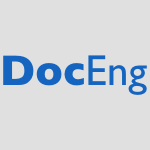 DocEng-2012-MarinaiQ #game studies
DocEng-2012-MarinaiQ #game studies- Displaying chemical structural formulae in ePub format (SM, SQ), pp. 125–128.
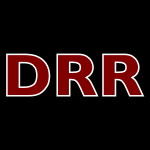 DRR-2012-SadawiSS #approach #recognition #rule-based
DRR-2012-SadawiSS #approach #recognition #rule-based- Chemical structure recognition: a rule-based approach (NMS, APS, VS).
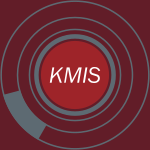 KMIS-2011-FortierS #modelling #process #requirements #using
KMIS-2011-FortierS #modelling #process #requirements #using- Defining Information Requirements — Using Business Process Modeling for Incident Response for Chemical Facilities (SCF, GLS), pp. 411–417.
 CASE-2010-ParkSR #automation #classification #database
CASE-2010-ParkSR #automation #classification #database- Image-based automated chemical database annotation with ensemble of machine-vision classifiers (JP, KS, GRR), pp. 168–173.
 CIKM-2010-KohnckeB #category theory #documentation #using #wiki
CIKM-2010-KohnckeB #category theory #documentation #using #wiki- Using Wikipedia categories for compact representations of chemical documents (BK, WTB), pp. 1809–1812.
 ICPR-2010-ZhangSW #classification #online
ICPR-2010-ZhangSW #classification #online- A SVM-HMM Based Online Classifier for Handwritten Chemical Symbols (YZ, GS, KW), pp. 1888–1891.
 SAC-2010-ViroliC #composition #self
SAC-2010-ViroliC #composition #self- Chemical-inspired self-composition of competing services (MV, MC), pp. 2029–2036.
 ICDAR-2009-ChangHZ #framework
ICDAR-2009-ChangHZ #framework- A Unified Framework for Recognizing Handwritten Chemical Expressions (MC, SH, DZ), pp. 1345–1349.
 ICDAR-2009-WangSY #comprehension #online
ICDAR-2009-WangSY #comprehension #online- The Understanding and Structure Analyzing for Online Handwritten Chemical Formulas (XW, GS, JY), pp. 1056–1060.
 ICDAR-2009-ZhangSY #online #recognition
ICDAR-2009-ZhangSY #online #recognition- HMM-Based Online Recognition of Handwritten Chemical Symbols (YZ, GS, JY), pp. 1255–1259.
 OCSC-2009-TerasM #social #social media
OCSC-2009-TerasM #social #social media- Notice Board as Metaphor for Social Media Service in Chemical Factory (ST, PM), pp. 117–125.
 DAC-2008-ChoLKC #design #power management
DAC-2008-ChoLKC #design #power management- The design of a low power carbon nanotube chemical sensor system (TSC, KJL, JK, APC), pp. 84–89.
 SFM-2008-Zavattaro #automaton #probability
SFM-2008-Zavattaro #automaton #probability- A Gentle Introduction to Stochastic (Poly)Automata Collectives and the (Bio)Chemical Ground Form (GZ), pp. 507–523.
 ICPR-2008-PorroHTNDB #evaluation #performance
ICPR-2008-PorroHTNDB #evaluation #performance- Performance evaluation of relevance vector machines as a nonlinear regression method in real-world chemical spectroscopic data (DP, NHG, ITB, ON, AD, RJB), pp. 1–4.
 KDD-2008-ChoRC #data mining #identification #mining #network
KDD-2008-ChoRC #data mining #identification #mining #network- Reconstructing chemical reaction networks: data mining meets system identification (YJC, NR, YC), pp. 142–150.
 CASE-2007-YangC
CASE-2007-YangC- A Compact Separation Column For Hazardous Chemicals (YY, JC), pp. 853–856.
 MLDM-2007-Armengol
MLDM-2007-Armengol- Discovering Plausible Explanations of Carcinogenecity in Chemical Compounds (EA), pp. 756–769.
 SAC-2006-BanatreFR #coordination #towards
SAC-2006-BanatreFR #coordination #towards- Towards chemical coordination for grids (JPB, PF, YR), pp. 445–446.
 SEFM-2005-NemethPP #workflow
SEFM-2005-NemethPP #workflow- Workflow Enactment Based on a Chemical Metaphor (ZN, CP, TP), pp. 127–136.
 ICEIS-v1-2005-MiatidisJ #ide #workflow
ICEIS-v1-2005-MiatidisJ #ide #workflow- Integrating Workflow Extensions into a Process-Integrated Environment for Chemical Engineering (MM, MJ), pp. 255–260.
 KDD-2005-KalosR #data mining #industrial #mining
KDD-2005-KalosR #data mining #industrial #mining- Data mining in the chemical industry (ANK, TR), pp. 763–769.
 ICGT-2004-YadavKS #graph transformation
ICGT-2004-YadavKS #graph transformation- The Potential of a Chemical Graph Transformation System (MKY, BPK, SMS), pp. 83–95.
 ICEIS-v2-2004-KooptiwootS04a #idea #mining #set #using
ICEIS-v2-2004-KooptiwootS04a #idea #mining #set #using- Mining the Relationships in the Form of Predisposing Factor and Coincident Factor in Time Series Data Set by Using the Combination of some Existing Ideas with a new Idea from the Fact in the Chemical Reaction (SK, MAS), pp. 531–534.
 ICML-2004-NatteeSNO #first-order #learning #mining #multi
ICML-2004-NatteeSNO #first-order #learning #mining #multi- Learning first-order rules from data with multiple parts: applications on mining chemical compound data (CN, SS, MN, TO).
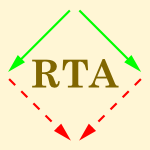 RTA-2003-BournezCCKI #approach #automation #generative #rule-based
RTA-2003-BournezCCKI #approach #automation #generative #rule-based- A Rule-Based Approach for Automated Generation of Kinetic Chemical Mechanisms (OB, GMC, VC, HK, LI), pp. 30–45.
 DAC-2000-TianWB #modelling
DAC-2000-TianWB #modelling- Model-based dummy feature placement for oxide chemical-mechanical polishing manufacturability (RT, DFW, RB), pp. 667–670.
 ICEIS-2000-KalininNSP #network #process
ICEIS-2000-KalininNSP #network #process- Usage of Instrument of Neural Networks in Control of Complex Chemical-Technological Processes (AK, LN, ES, SP), pp. 521–524.
 ICDAR-1999-RamelBE #automation #image #representation
ICDAR-1999-RamelBE #automation #image #representation- Automatic Reading of Handwritten Chemical Formulas from a Structural Representation of the Image (JYR, GB, HE), pp. 83–86.
 HCI-CCAD-1999-WolfFSL #design #process
HCI-CCAD-1999-WolfFSL #design #process- Groupware support for chemical process design (MW, CF, CMS, HL), pp. 343–347.
 TLCA-1999-MikamiA #automaton #case study #linear
TLCA-1999-MikamiA #automaton #case study #linear- A Study of Abramsky’s Linear Chemical Abstract Machine (SM, YA), pp. 243–257.
 KDD-1998-DehaspeTK
KDD-1998-DehaspeTK- Finding Frequent Substructures in Chemical Compounds (LD, HT, RDK), pp. 30–36.
 CAV-1997-TurkPP #process #testing #verification
CAV-1997-TurkPP #process #testing #verification- Verification of a Chemical Process Leak Test Procedure (ALT, STP, GJP), pp. 84–94.
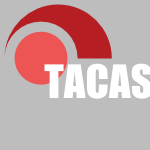 TACAS-1996-KowalewskiP #composition #framework #modelling #realtime #verification
TACAS-1996-KowalewskiP #composition #framework #modelling #realtime #verification- Timed Condition/Event Systems: A Framework for Modular Discrete Models of Chemical Plants and Verification of Their Real-Time Discrete Control (SK, JP), pp. 225–240.
 ICDAR-v1-1995-SimonPJ #automation #documentation #generative #image
ICDAR-v1-1995-SimonPJ #automation #documentation #generative #image- (Chem)DeT/sub E/X automatic generation of a markup language description of (chemical) documents from bitmap images (AS, JCP, APJ), pp. 458–461.
 SAC-1994-RuizSG #tutorial
SAC-1994-RuizSG #tutorial- A tutorial system for inorganic chemical formulations and reactions (ILR, JLCS, MÁGN), pp. 583–587.
 ICDAR-1993-CaseyBHMOZ #recognition
ICDAR-1993-CaseyBHMOZ #recognition- Optical recognition of chemical graphics (RGC, SB, PH, AM, BO, KZ), pp. 627–631.
 HCI-ACS-1993-HoonhoutZ #behaviour #industrial #process
HCI-ACS-1993-HoonhoutZ #behaviour #industrial #process- Operator Behavior and Supervisory Control Systems in the Chemical Process Industry (HCMH, HJGZ), pp. 109–114.
 KDD-1991-AiBL #database
KDD-1991-AiBL #database- Extracting Reaction Information from Chemical Databases (CSA, PEBJ, RHL), pp. 367–382.
 POPL-1990-BerryB #automaton
POPL-1990-BerryB #automaton- The Chemical Abstract Machine (GB, GB), pp. 81–94.
 ML-1989-ORorkeMS #abduction #case study
ML-1989-ORorkeMS #abduction #case study- Theory Formation by Abduction: Initial Results of a Case Study Based on the Chemical Revolution (PO, SM, DS), pp. 266–271.
 DAC-1979-MatsuiTEMSYSNK #automation #pipes and filters
DAC-1979-MatsuiTEMSYSNK #automation #pipes and filters- Automatic pipe routing and material take-off system for chemical plant (YM, HT, SE, NM, SS, CY, TS, SN, BK), pp. 121–127.
 CASE-2015-FerreiraBGV #framework #using
CASE-2015-FerreiraBGV #framework #using CASE-2015-ForsmanR #process
CASE-2015-ForsmanR #process CASE-2015-Kruif #maintenance #optimisation #sequence
CASE-2015-Kruif #maintenance #optimisation #sequence HIMI-IKC-2015-TakedaHKN #lifecycle #modelling #process
HIMI-IKC-2015-TakedaHKN #lifecycle #modelling #process OOPSLA-2015-CrafaP #approach #programming
OOPSLA-2015-CrafaP #approach #programming CAV-2015-AbateBCK #adaptation #analysis #markov #network
CAV-2015-AbateBCK #adaptation #analysis #markov #network DATE-2014-RichterVSHV #challenge
DATE-2014-RichterVSHV #challenge SAC-2014-AngelisFS #composition #self
SAC-2014-AngelisFS #composition #self ICDAR-2013-TangHF #analysis #approach #recognition
ICDAR-2013-TangHF #analysis #approach #recognition KEOD-2013-TimonenPT #fuzzy #modelling #ontology #safety #using
KEOD-2013-TimonenPT #fuzzy #modelling #ontology #safety #using ICMT-2013-MannEF #framework #graph grammar #library #term rewriting
ICMT-2013-MannEF #framework #graph grammar #library #term rewriting CASE-2012-Chang #detection #fault #feature model #process #using
CASE-2012-Chang #detection #fault #feature model #process #using DocEng-2012-MarinaiQ #game studies
DocEng-2012-MarinaiQ #game studies DRR-2012-SadawiSS #approach #recognition #rule-based
DRR-2012-SadawiSS #approach #recognition #rule-based KMIS-2011-FortierS #modelling #process #requirements #using
KMIS-2011-FortierS #modelling #process #requirements #using CASE-2010-ParkSR #automation #classification #database
CASE-2010-ParkSR #automation #classification #database CIKM-2010-KohnckeB #category theory #documentation #using #wiki
CIKM-2010-KohnckeB #category theory #documentation #using #wiki ICPR-2010-ZhangSW #classification #online
ICPR-2010-ZhangSW #classification #online SAC-2010-ViroliC #composition #self
SAC-2010-ViroliC #composition #self ICDAR-2009-ChangHZ #framework
ICDAR-2009-ChangHZ #framework ICDAR-2009-WangSY #comprehension #online
ICDAR-2009-WangSY #comprehension #online ICDAR-2009-ZhangSY #online #recognition
ICDAR-2009-ZhangSY #online #recognition OCSC-2009-TerasM #social #social media
OCSC-2009-TerasM #social #social media DAC-2008-ChoLKC #design #power management
DAC-2008-ChoLKC #design #power management SFM-2008-Zavattaro #automaton #probability
SFM-2008-Zavattaro #automaton #probability ICPR-2008-PorroHTNDB #evaluation #performance
ICPR-2008-PorroHTNDB #evaluation #performance KDD-2008-ChoRC #data mining #identification #mining #network
KDD-2008-ChoRC #data mining #identification #mining #network CASE-2007-YangC
CASE-2007-YangC MLDM-2007-Armengol
MLDM-2007-Armengol SAC-2006-BanatreFR #coordination #towards
SAC-2006-BanatreFR #coordination #towards SEFM-2005-NemethPP #workflow
SEFM-2005-NemethPP #workflow ICEIS-v1-2005-MiatidisJ #ide #workflow
ICEIS-v1-2005-MiatidisJ #ide #workflow KDD-2005-KalosR #data mining #industrial #mining
KDD-2005-KalosR #data mining #industrial #mining ICGT-2004-YadavKS #graph transformation
ICGT-2004-YadavKS #graph transformation ICEIS-v2-2004-KooptiwootS04a #idea #mining #set #using
ICEIS-v2-2004-KooptiwootS04a #idea #mining #set #using ICML-2004-NatteeSNO #first-order #learning #mining #multi
ICML-2004-NatteeSNO #first-order #learning #mining #multi RTA-2003-BournezCCKI #approach #automation #generative #rule-based
RTA-2003-BournezCCKI #approach #automation #generative #rule-based DAC-2000-TianWB #modelling
DAC-2000-TianWB #modelling ICEIS-2000-KalininNSP #network #process
ICEIS-2000-KalininNSP #network #process ICDAR-1999-RamelBE #automation #image #representation
ICDAR-1999-RamelBE #automation #image #representation HCI-CCAD-1999-WolfFSL #design #process
HCI-CCAD-1999-WolfFSL #design #process TLCA-1999-MikamiA #automaton #case study #linear
TLCA-1999-MikamiA #automaton #case study #linear KDD-1998-DehaspeTK
KDD-1998-DehaspeTK CAV-1997-TurkPP #process #testing #verification
CAV-1997-TurkPP #process #testing #verification TACAS-1996-KowalewskiP #composition #framework #modelling #realtime #verification
TACAS-1996-KowalewskiP #composition #framework #modelling #realtime #verification ICDAR-v1-1995-SimonPJ #automation #documentation #generative #image
ICDAR-v1-1995-SimonPJ #automation #documentation #generative #image SAC-1994-RuizSG #tutorial
SAC-1994-RuizSG #tutorial ICDAR-1993-CaseyBHMOZ #recognition
ICDAR-1993-CaseyBHMOZ #recognition HCI-ACS-1993-HoonhoutZ #behaviour #industrial #process
HCI-ACS-1993-HoonhoutZ #behaviour #industrial #process KDD-1991-AiBL #database
KDD-1991-AiBL #database POPL-1990-BerryB #automaton
POPL-1990-BerryB #automaton ML-1989-ORorkeMS #abduction #case study
ML-1989-ORorkeMS #abduction #case study DAC-1979-MatsuiTEMSYSNK #automation #pipes and filters
DAC-1979-MatsuiTEMSYSNK #automation #pipes and filters









